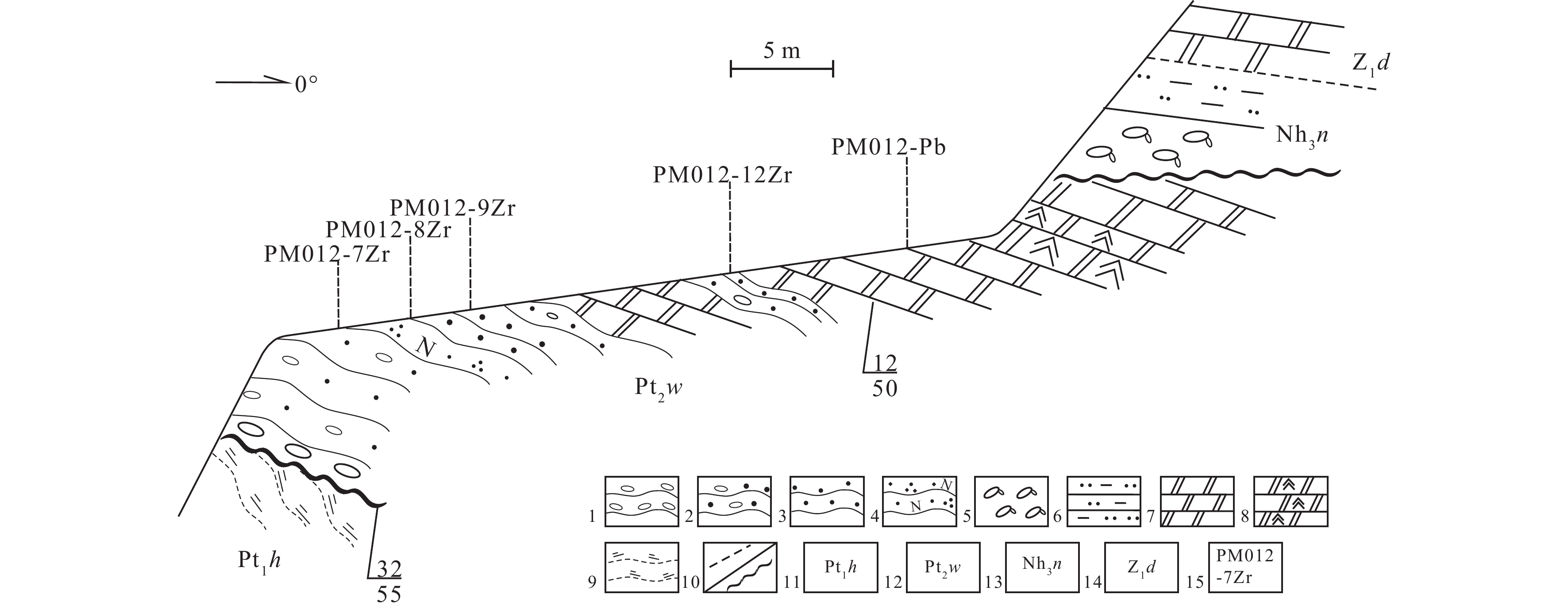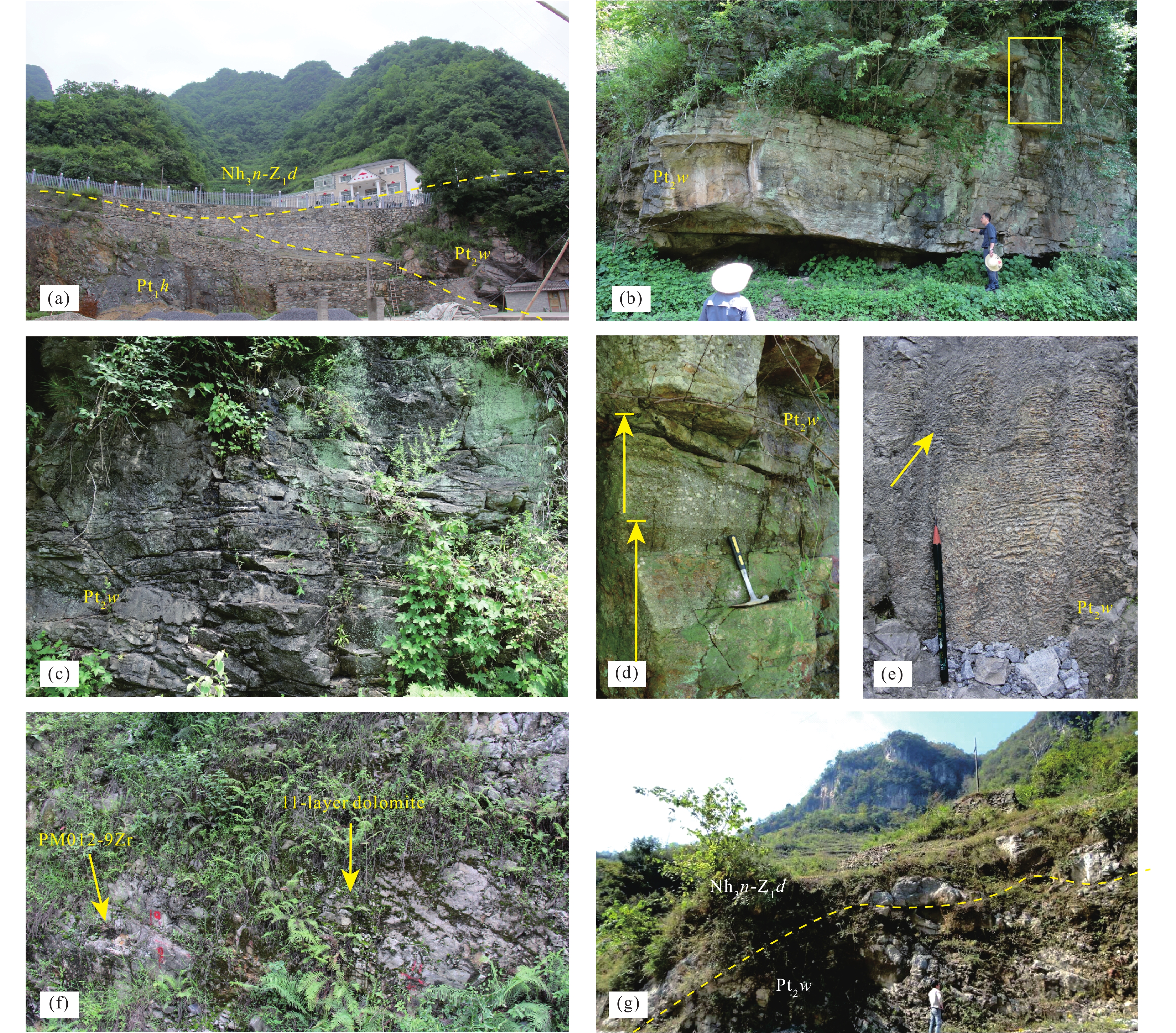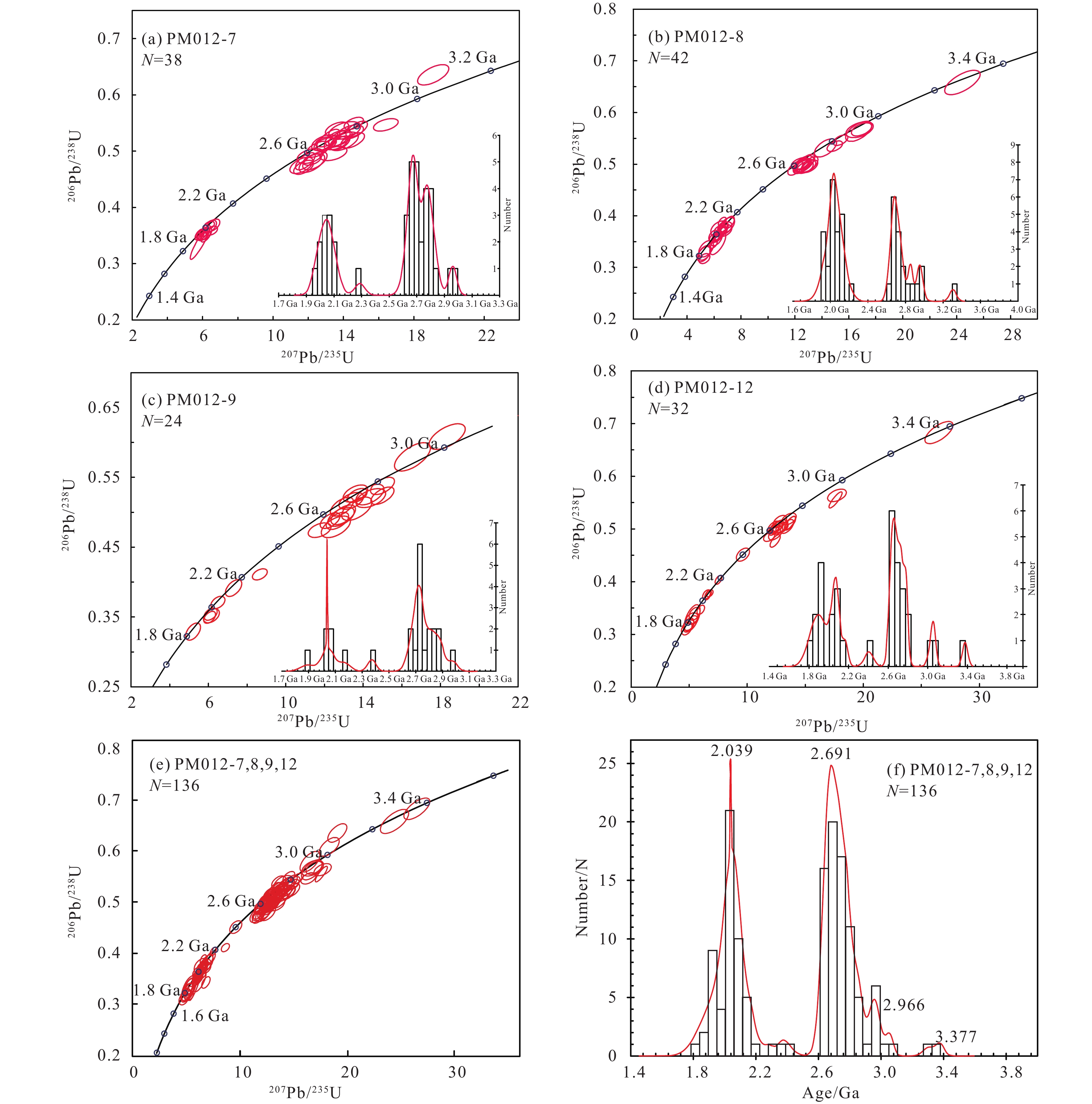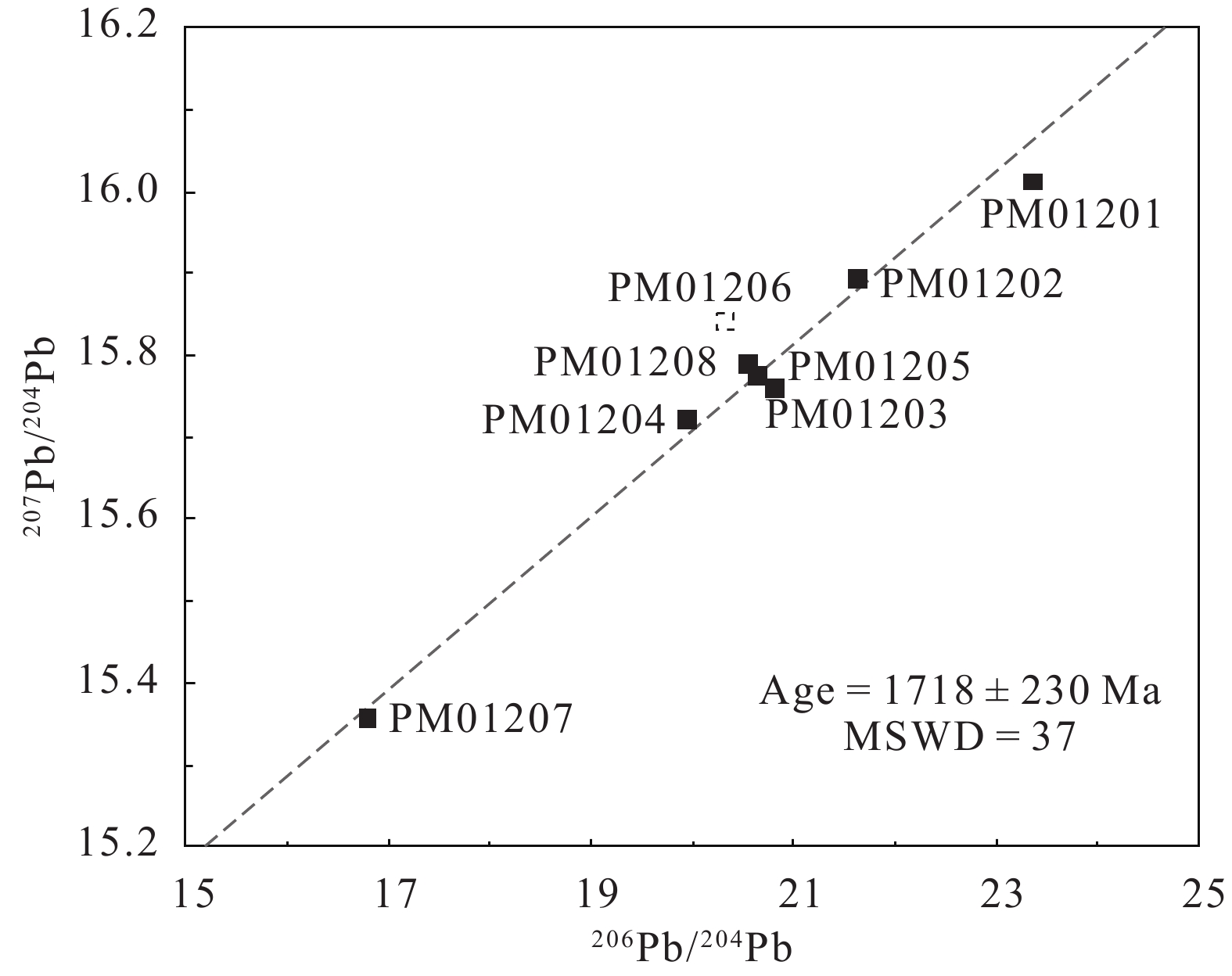| Citation: | Xiao-ming Zhao, Xiao-fei Qiu, Zhi-hui An, Nian-wen Wu, Li Tian, Yun-xu Wei, Tuo Jiang, 2019. Redefinition of Early Mesoproterozoic (1800–1600 Ma) stratigraphy in the northern Kongling area, China: The nucleus of Yangtze Craton and its tectonic significance, China Geology, 2, 157-168. doi: 10.31035/cg2018085 |
Redefinition of Early Mesoproterozoic (1800–1600 Ma) stratigraphy in the northern Kongling area, China: The nucleus of Yangtze Craton and its tectonic significance
-
Abstract
The Wujiatai Formation, which is well exposed in Huangjiatai-Xichahe region of the northern Kongling area of central Yangtze Craton, is a suite of epimetamorphic conglomerates to pebbly sandstones to fine sandstone-dolostones deposited in littoral-carbonate platform facies. The formation has angular unconformity contacts with both the overlying Neoproterozoic Nantuo Formation and the underlying Paleoproterozoic Huanglianghe Formation complex. Detrital zircons from metafine sandstones of the lower Wujiatai Formation have ages ranging from 3377–1828 Ma, with the youngest zircons dating to about 1828 Ma. In addition, whole-rock Pb-Pb isochron ages from dolostones in the upper Wujiatai Formation yield an age of 1718±230 Ma. These dates constrain the depositional age of the Wujiatai Formation between 1800 Ma and 1600 Ma. These are the earliest Mesoproterozoic sedimentary records reported in the Kongling region, and fill the gaps in Early Mesoproterozoic stratigraphy in Yangtze Craton. Histograms of detrital zircon ages for the Wujiatai Formation reveal four major peaks at 2039 Ma, 2691 Ma, 2966 Ma and 3377 Ma, which is consistent with the ages of the basement rocks that underlie the center of Yangtze Craton, indicating that sediment provenance is mainly from the Kongling complex. The lower Wujiatai Formation mainly consists of clastic rocks, whereas the upper Wujiatai Formation consists of dolostones. This stratigraphic change implies a deepening sequence in an expanding basin with an initial cratonic rifting tectonic setting, corresponding to the initial breakup of the Columbia super-continent in Yangtze Craton.
-

-
References
[1] Berry RF, Jenner GA, Melfre S, Turbrett MN. 2001. A north American provenance for Neoproterozoic to Cambrian sandstones in Tasmania. Earth and Planetary Science Letters, 192, 207–222. doi: 10.1016/S0012-821X(01)00436-8 [2] Chen GX, Jing JW, Wu XS. 1996. Multiple classification and correlation of the stratigraphy of China: Stratigraphy (Lithostratic) of Hubei Province. China University of Geosciences Press, 9–54. [3] Chen K, Gao S, Wu YB, Guo JL, Hu ZC, Liu YS, Zong KQ, Liang ZW, Geng XL. 2013. 2.6–2.7 Ga crustal growth in Yangtze craton, South China. Precambrian Research, 224, 472–490. doi: 10.1016/j.precamres.2012.10.017 [4] Gao S, Yang J, Zhou L, Li M, Hu ZC, Guo JL, Yuan HL, Gong HJ, Xiao GQ, Wei JQ. 2011. Age and growth of the Archean Kongling Terrain, South China, with emphasis on 3.3 Ga granitoid gneisses. American Journal of Science, 311, 153–182. doi: 10.2475/02.2011.03 [5] Geng YS, Lu SN. 2014. Advances in the study of Precambrian chrono stratigraphy in China: A review. Earth Science Frontiers, 21(2), 102–118. [6] Gopalan K, Kumar A, Kumar S, Vigiayagopal B. 2013. Depositional history of the Upper Vindhyan succession, central India: time constraints from Pb-Pb isochron ages of its carbonate components. Precambrian Research, 233, 108–117. doi: 10.1016/j.precamres.2013.04.014 [7] Guo JL, Wu YB, Gao S, Jin ZM, Zong KQ, Hu ZC. 2015. Episodic Paleoarchean-Paleoproterozoic (3.3−2.0 Ga) granitoid magmatism in Yangtze Craton, South China: implications for Late Archean tectonics. Precambrian Research, 270, 246–266. doi: 10.1016/j.precamres.2015.09.007 [8] Han PY, Guo JL, Chen K. 2017. Widespread Neoarchean (2.7−2.6 Ga) magmatism of the Yangtze Craton, South China, as revealed by modern river detrital zircons. Gondwana Researh, 42, 1–12. doi: 10.1016/j.gr.2016.09.006 [9] Hu ZX, Liu ZX, Zhang YL, Mao XW, Ran RS, Liao ZM, Liu CX. 2012. Determination of the bottom boundary of Shennonjia Gr in pre-Nanhuan period about the northern margin of Yangtze massif and its geological significance. Resources Environment and Engineering, 26(3), 201–208. [10] Hu R, Li SQ, Wang W. 2016. Source characteristics of tillite the Nantuo Formation in three gorges, Northern Yangtze Block: evidences from zircon ages and geochemical composition. Earth Science, 41(10), 1630–1654 (in Chinese with English abstract). [11] Kuznetsov AB, Ovchinnikova GV, Gorokhov IM, Letnikova EF, Kaurova OK, Konstantinova GV. 2013. Age constraints on the Neoproterozoic Baikal Group from combined Sr isotopes and Pb-Pb dating of Carbonates from the Baikal type section, Southeastern Siberia. Journal of Asian Earth Science, 62, 51–66. doi: 10.1016/j.jseaes.2011.06.003 [12] Leier AL, Kapp P, Gehrels GE, Decelles PG. 2007. Detrital zircon geochronology of Carboniferou-Cretaceous strata in the Lhasa terrane, southern Tibet. Basin Research, 19, 361–378. doi: 10.1111/bre.2007.19.issue-3 [13] Li FX, Nie XW, Hu ZX, Yuan ZX. 1989. A Preliminary discussion on the unconformity relationship between Middle and Lower Proterozoic earth on the Northern margin of Huangling faulted dome. Hubei Geology, 3(1), 43–56 (in Chinese with English abstract). [14] Li HK, Zhang CL, Xiang ZQ, Lu SN, Zhang J, Geng JZ, Qu LS, Wang ZX. 2013. Zircon and baddeleyite U-Pb geochronology of the Shennongjia Group in the Yangtze Craton and its tectonic significance. Acta Petrologica Sinica, 29(2), 673–697 (in Chinese with English abstract). [15] Li XH, Li ZX, Li WX. 2014. Detrital zircon U-Pb age and Hf isotope constrains on the generation and reworking of Precambrian continental crust in the Cathaysia Block, South China: A synthesis. Gondwana Research, 25, 1202–1215. doi: 10.1016/j.gr.2014.01.003 [16] Ling WL, Gao S, Zhang BR, Zhou L, Xu QD. 2001. The recognizing of ca.1.95 Ga tectono-thermal event in Kongling nucleus and its significance for the evolution of Yangtze Block, South China. Chinese Science Bulletin, 46(4), 326–329. doi: 10.1007/BF03187196 [17] Liu H, Xu DL, Wei YX, Deng X, Peng LH. 2017. Depositional age of the Dagushi Group in the Dahong Mountain, Hubei Province: Evidence from U-Pb ages of detrital zircons. Geological Bulletin of China, 36(5), 715–725 (in Chinese with English abstract). [18] Lu SS, Qiu XF, Tan JJ, Lu H, Yang HM, Wang ZX, Zhong Q. 2016. The Pb-Pb isochron age of the Kuangshishan Formation in Shennongjia area on the Northern margin of the Yangtze Craton and its geological implications. Earth Science, 41(2), 317–324 (in Chinese with English abstract). [19] Ludwig KR. 2003. ISOPLOT3: A geochronological toolkit for microsoft excel. Berkeley Geochronology Center, California, Berkeley, 39. [20] Moorbath, S, Taylor, PN, Orpen, JL, Treloar P, Wilson JF. 1987. First direct radiometric dating of archaean stromatolitic limestone. Nature, 326(6116), 865–867. doi: 10.1038/326865a0 [21] Peng M, Wu Y, Wang J, Jiao W, Liu X, Yang S. 2009. Paleoproterozoic mafic dyke from Kongling terrain in the Yangtze Craton and its implication. Chinese Science Bulletin, 54, 1098–1104. [22] Peng M, Wu Y, Gao S, Zhang H, Wang J, Liu X, Gong H, Zhou L, Hu Z, Liu Y, Yuan H. 2012. Geochemistry, zircon U-Pb age and Hf isotope compositions of Paleoproterozoic aluminous A-type on granites from the Kongling terrain, Yangtze Block: Constraints on petrogenesis and geologic implications. Gondwana Research, 22, 140–151. doi: 10.1016/j.gr.2011.08.012 [23] Peng SB, Kusky T, Jiang XF, Wang L, Wang JP, Deng H. 2012. Geology, geochemistry, and geochronology of the Miaowan ophiolite, Yangtze Craton: implications for South China’s Amalgamation history with the Rodinia supercontinent. Gondwana Research, 21(2-3), 577–594. doi: 10.1016/j.gr.2011.07.010 [24] Qiu XF, Ling WL, Liu XM. 2014. Correlation between the Mesoproterozoic and the Shennongjia Area: Constraints from zircon geochronological and Hf isotope. Geological Science and Technology Information, 33(2), 1–8. [25] Qiu XF, Ling WL, Liu XM, Kusky T, Berkana W, Zhang YH, Gao YJ, Lu SS, Kuang H, Liu CX. 2011. Recognition of Grenvillian volcanic suite in the Shennongjia region and its tectonic significance for the South China Craton. Precambrian Research, 191(3-4), 101–119. doi: 10.1016/j.precamres.2011.09.011 [26] Qiu XF, Yang HM, Zhang LG, Zhao XM, Duan GL, Lu SS, Tan JJ, Shi N. 2015. Geochronology of sepentinized Harzburgite in Miaowan Ophiolite, Yangtze Block and its tectonic implications. Earth Science-Journal of China University of Geosciences, 40(7), 1121–1128 (in Chinese with English abstract). doi: 10.3799/dqkx.2015.094 [27] Qiu YM, Gao S, Mcnaughton NJ, Groves DI, Ling W. 2000. First evidence of >3.2Ga continental crust in the Yangtze craton of south China and its implications for Archean crustal evolution and Phanerozoic tectonics. Geology, 28(1), 11–14. doi: 10.1130/0091-7613(2000)028<0011:FEOGCC>2.0.CO;2 [28] Wan YS, Liu SJ, Xie HQ, Dong CY, Li Y, Bai WQ, Liu DY. 2018. Formation and evolution of the Archean continental crust of China: A review. China Geology, 1, 109–136. doi: 10.31035/cg2018011 [29] Wang LJ, Griffin WL, Yu JH. 2010. Precambrian crustal evolution of the Yangtze Block tracked by detrital zircons from Neoproterozoic sedimentary rocks. Precambrian Research, 177(1/4), 176–187. [30] Wang LJ, Yu JH, Griffin WL, O’Reilly SY. 2012. Early crustal evolution in the western Yangtze Block: Evidence from U−Pb and Lu-Hf isotopes on detrital zircons from sedimentary rocks. Precambrian Research, 222-223, 368–385. doi: 10.1016/j.precamres.2011.08.001 [31] Wang YJ, Fan WM, Zhang GW, Zhang YH. 2013. Phanerozoic tectonics of the South China Block: Key observations and controversies. Gondwana Research, 23, 1273–1305. doi: 10.1016/j.gr.2012.02.019 [32] Wei JQ, Wang JX, Wang XD, Shan MY, Guo HM. 2009. Dating of mafic dikes from Kongling Group in Huangling Area and its implications. Journal of Northwest University(Natural Science Edition), 39(3), 466–471. [33] Wei YX, Ma CQ, Xu DL, Zhao XM, Peng LH, Deng X, Liu H. 2016. Zircon SHRIMP U-Pb Geochronology of the Volcanic Rocks from the Paleoproterozoic Huanglianghe Formation in the Yangtze Craton and its Geological Significance. Geology and Mineral Resources of South China, 32(3), 297. [34] Wu YB, Gao S, Zhang HF, Zheng JP, Liu XC, Wang H, Gong HJ, Zhou L, Yuan HL. 2012. Geochemistry and zircon U-Pb geochronology of Paleoproterozoic arc related granitoid in the Northwestern Yangtze Block and its geological implications. Precambrian Research, 200, 26–37. [35] Xiong XW, Chen YY. 1991. Sedimentary features and its significance of tectono-plaeogeography of Dagushi Group, Jinshan, Hubei Province. Earth Science-Journal of China university of Geosciences, 16(5), 489–495 (in Chinese with English abstract). [36] Xu DL, Liu H, Wei YX, Peng LH, Deng X. 2016. Detrial zircon U-Pb dating of Zhengjiaya Formation from the Shennongjia area in the northern Yangtze Block and its tectonic implications. Acta Geologica Sinica, 90(10), 2648–2660 (in Chinese with English abstract). [37] Zhang YL, Wang ZQ, Wang G, Wang K. 2016. Detrital zircon geochronology of the Late Paleozoic Taohekou Formation and its constraints on the Paleozoic magatic events in North Daba Mountains. Acta Gelogica Sinica, 90(4), 728–738. [38] Zhang SB, Zheng YF, Wu YB, Zhao ZF, Gao S, Wu FY. 2006a. Zircon U-Pb age and Hf-O isotope evidence for Paleoproterozoic metamorphic event in South China. Precambrian Research, 151, 265–288. doi: 10.1016/j.precamres.2006.08.009 [39] Zhang SB, Zheng YF, Wu YB, Zhao ZF, Gao S, Wu FY. 2006b. Zircon isotope evidence for ≥3.5 Ga continental crust in the Yangtze Craton of China. Precambrian Research, 146, 16–34. doi: 10.1016/j.precamres.2006.01.002 [40] Zhang QD, Song TR, He ZJ. 2002. Pb-Pb age determination of Meso-to Neoproterozoic Carbonates in the Ming Tombs District, Beijing. Geological Review, 48(4), 416–423 (in Chinese with English abstract). [41] Zhao FQ, Zhao WP, Zuo YC, Li ZH. 2006. Zircon U-Pb ages of the Migmatites from Kongling complex. Geological Survey and Research, 29(2), 81–85 (in Chinese with English abstract). [42] Zhao GC. 2012. Precambrian Geology of China: An introduction. Precambrian Research, 222-223, 13–54. doi: 10.1016/j.precamres.2012.09.017 [43] Zhao XM, An ZH, Qiu XF, Wu NW, Wei YX, Hu K, Zhao YX. 2018. A new understanding of the “Macaoyuan Group” in North Kongling area of Yangtze Craton. Earth Science, 43(9), 3324–3336 (in Chinese with English abstract). [44] Zhao YS, Li JH. 1987. Micropalaeoflora of Dagushi Group in Northern Hubei and its Stratigraphic division and correlation. Hubei Geology, 1(1), 11–27 (in Chinese with English abstract). -
Access History

-
Figure 1.
Geologic map of Mesoproterozoic rocks in the northern Kongling area, China.
-
Figure 2.
Mesoproterozoic the Wujiatai Formation (PM012) in the northern Kongling area and the sample locations. 1−Meta-conglomerate; 2−meta-pebbly sandstone; 3−meta-fine sandstone; 4−meta-feldspar-quartz sandstone; 5−tillite; 6−muddy siltstone; 7−dolostone; 8−stromatolite dolostone; 9−phyllite; 10−parallel and angular unconformity; 11−Huanglianghe Formation complex; 12−Wujiatai Formation; 13−Nantuo Formation; 14−Doushantuo Formation; 15−sample sites.
-
Figure 3.
Mesoproterozoic the Wujiatai Formation and some typical sedimentary structures. a−Distant view of the contact relationship of the Wujiatai Formation and the Huanglinghe Formation complex; b−meta-conglomerates at the base of the Wujiatai Formation (yellow rectangle is enlarged and displayed in “d”); c−meta-fine sandstone in the lower Wujiatai Formation; d−the normal sequence of bedding observed in the lower Wujiatai Formation; e−stromatolite in the upper Wujiatai Formation; f−sampling locations in PM012 section used for age dating; g−angular unconformity between the Wujiatai Formation and the Nantuo Formation.
-
Figure 4.
CL images of the typical zircon grains of the Wujiatai Formation in the northern Kongling area, showing spot number and locations of analytical spots with the corresponding apparent ages.
-
Figure 5.
U–Pb Concordia diagram and probabilistic histogram for the Huangjiatai Formation in the northern Kongling area, China.
-
Figure 6.
Pb-Pb isochron of the Wujiatai Formation in the northern Kongling area.

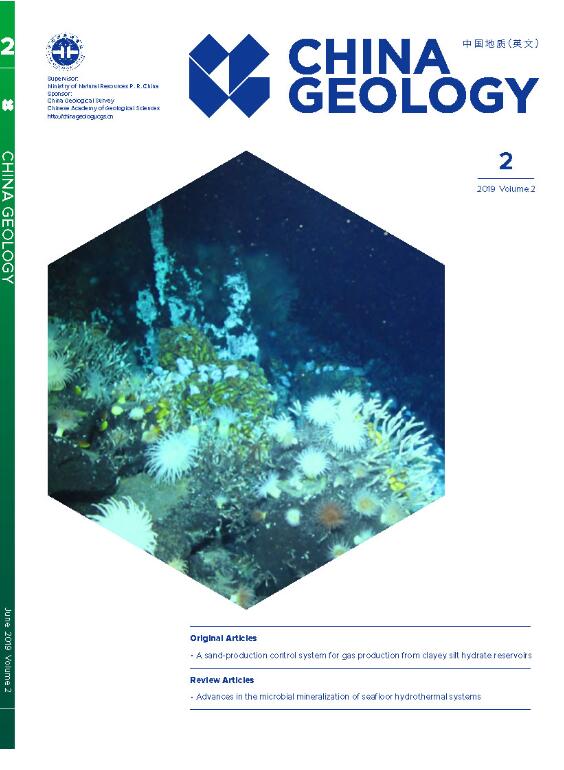



 DownLoad:
DownLoad:
